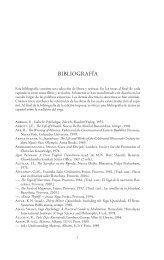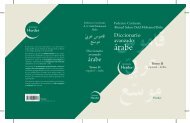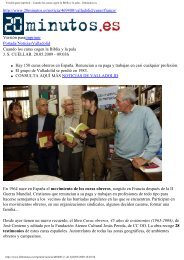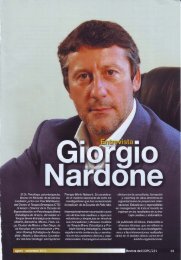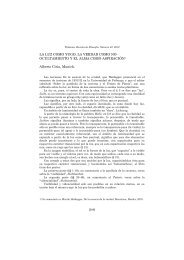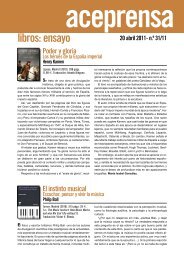Manual de profesores - Herder Editorial
Manual de profesores - Herder Editorial
Manual de profesores - Herder Editorial
Create successful ePaper yourself
Turn your PDF publications into a flip-book with our unique Google optimized e-Paper software.
Unidad 9: Österreich und Wien<br />
OBJETIVOS DE APRENDIZAJE<br />
Comunicación<br />
hablar <strong>de</strong> Austria y <strong>de</strong> Viena: Was wissen Sie über Österreich? Was wür<strong>de</strong>n Sie in Österreich gerne sehen?<br />
Was wissen Sie bereits über Wien?<br />
<strong>de</strong>scribrir monumentos: Die Hofburg war bis ... und ist heute ... Die ältesten Teile stammen aus ...<br />
indicar un camino: Nennen Sie das Ziel nicht, son<strong>de</strong>rn beschreiben Sie, wie man dahin kommt. Die an<strong>de</strong>ren<br />
sollen <strong>de</strong>n Weg auf <strong>de</strong>m Stadtplan verfolgen und Ihnen das Ziel nennen.<br />
hablar sobre planes <strong>de</strong> viaje: Ich plane meine Reisen immer ganz genau. Deshalb ... Welche Veranstaltung<br />
interessiert Sie am meisten? Wer besorgt die Eintrittskarten?<br />
hablar sobre los cafés en Viena: Gibt es in Ihrem Land auch eine Institution wie das Kaffeehaus? Wo<br />
trifft man sich, um ...?<br />
preparar la visita <strong>de</strong> un acto cultural: Lesen Sie die Inhaltsangaben und hören Sie die Szene aus Hofmannsthals<br />
«Je<strong>de</strong>rmann» sowie die Arie aus <strong>de</strong>r «Zauberflöte». Welche Veranstaltung wür<strong>de</strong>n Sie gerne<br />
besuchen?<br />
pedir información por carta: Sie planen mit Ihrem Kurs eine Reise nach Wien. Ergänzen Sie <strong>de</strong>n Brief mit<br />
Hilfe <strong>de</strong>r folgen<strong>de</strong>n Punkte.<br />
Gramática<br />
el genitivo: Der Turm <strong>de</strong>s Stephansdoms ist 136,7 m hoch. Er ist <strong>de</strong>r dritthöchste Kirchturm <strong>de</strong>r Welt.<br />
preposiciones con genitivo: Der Prater liegt außerhalb <strong>de</strong>s Stadtzentrums.<br />
Campos semánticos<br />
la cultura, la orientación<br />
Preparar el examen <strong>de</strong>l Zertifikat Deutsch<br />
comprensión auditiva (selectiva)<br />
Inicio<br />
La mayoría <strong>de</strong> las unida<strong>de</strong>s <strong>de</strong> euroalemán están relacionadas con Alemania. Sin embargo, también se<br />
quiere informar sobre otras regiones don<strong>de</strong> se habla alemán y presentar a personas que vengan <strong>de</strong><br />
estas regiones, como podría ser Flavia Eggenberger <strong>de</strong> Zurich, en la unidad anterior.<br />
En la unidad 9 la atención se centra en Austria y la capital <strong>de</strong> la república <strong>de</strong> los Alpes, Viena. Se preten<strong>de</strong><br />
presentar la imagen compleja <strong>de</strong> un país que tiene mucho en común con Alemania, pero que<br />
al mismo tiempo está caracterizado por rasgos propios en los ámbitos lingüístico, histórico, cultural<br />
y, cómo no, geográfico. Precisamente por su situación geográfica el país ha tenido y sigue teniendo<br />
un papel muy importante en Europa.<br />
1 Empiece la lluvia <strong>de</strong> i<strong>de</strong>as sobre Austria con los libros cerrados. Dibuje en la pizarra el centro <strong>de</strong><br />
una red <strong>de</strong> palabras que irán ampliando los alumnos con sus aportaciones. Así nacerá un asociograma<br />
con elementos similares a los <strong>de</strong> este mo<strong>de</strong>lo, o más complejo aún:<br />
Kaffeehaus<br />
Alpen<br />
Hauptstadt: Wien<br />
Walzer<br />
Österreich<br />
Palatschinken<br />
Mozart<br />
Richard Strauss<br />
Salzburg<br />
Opernball<br />
Unidad 9 – 61



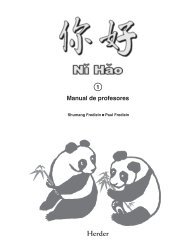


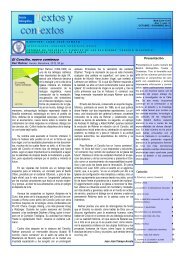
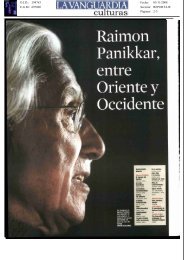
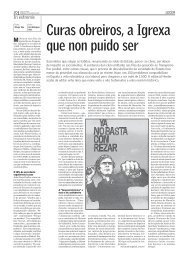
![El Cultural 12 junio[1].pdf - Herder Editorial](https://img.yumpu.com/22249766/1/184x260/el-cultural-12-junio1pdf-herder-editorial.jpg?quality=85)

